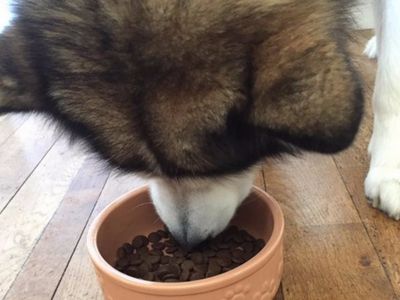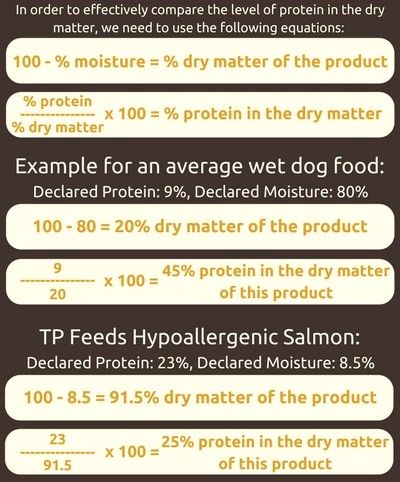Protein Levels in Dog Food - Comparing Wet and Dry Food
Posted on

The protein levels in dog food can often be a contentious subject. Some people have a strong opinion of what they deem to be 'appropriate', some have been informed of a specific number to look out for and others don't even take it into account when choosing their dogs' food. So, who is right? In this series of blog posts, I will show you various aspects of protein that you may not have considered. Today we are comparing the protein percentages of wet and dry dog food.
So, is it as simple as looking at the respective labels and seeing which number is higher or lower when the manufacturers display the protein percentage? In a word, 'no'. This is merely your starting point. Firstly, we need to discount the moisture content, and there is a vast amount of water in wet food. When chatting to customers, it often surprises me that they don't realise just how much water makes up this wet food, despite the manufacturers actually stating it on the pack.
On average, wet food is made up of 60-80% water (usually stated as 'moisture' on the packaging), what is left is called the 'dry matter' and this is where the nutrients for your dog are. By comparison, an average dry dog food contains just 10% water. TP Feeds' recipes contain 8-8.5% moisture. So, to be able to compare the protein levels in the two types of feeds, we need to focus purely on the dry matter content - the important bit. The infographic below shows you how it all breaks down - please don't be put off by the equations, it's genuinely not as complicated as it may appear, and if you're really lost, simply skip to below where I state the final, comparable figures clearly for you.

As you can see from the above, once you break down the numbers into a format that is actually comparable, they start to tell a completely different story.
Average wet food - declared protein 9%, protein present in the dry matter 45%
TP Feeds Hypoallergenic Salmon - declared protein 23%, protein present in the dry matter 25%
So, as with anything, if you're trying to compare two products, ensure that you are actually comparing like with like. Not to mention how much more volume you need to feed with wet food (due to its lower nutritional value).
In future blogs, I will chat more regarding taking the feed amount into account when comparing food and, most importantly, paying close attention to the source of the protein (not all protein sources were created equal!).
Related Articles:
Protein Levels In Dog Food - Can I Feed Too Much?
What Does 'Hypoallergenic' Mean In Dog Food?

Add a comment: